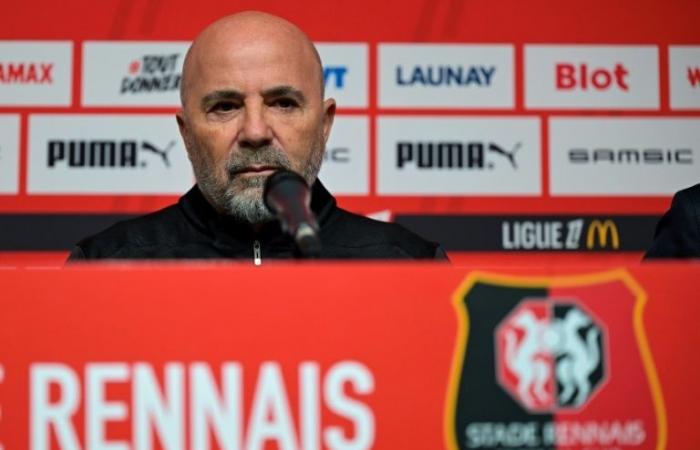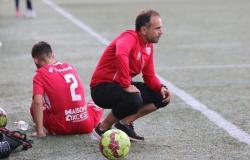“I wish it was a caricature. But no, it’s my way of experiencing football, excessively, sometimes,” sighed the technician on Tuesday, when he was questioned about his reputation as a coach with a volcanic temperament.
His character, matched with his bad boy look, shaved head and arms covered in tattoos, has made him famous almost as much as the quality of football he advocates.
Originally from Casilda, not far from Rosario, the third city of the country, one of the first iconic photographs of “Sampa” depicted him, at the end of 1995, in a black t-shirt and sunglasses, perched at the top of a tree to give his instructions to the local team he managed, after being excluded from the sidelines.
On the pitch, this passion translates into high expectations of the players from which he expects “absolute involvement”, as he said again on Tuesday.
Deprived of a professional career by injuries, he despises these footballers “office workers” who just “wait until the end of training to wash and go home”, which he described in an interview with the Argentine newspaper La Nacion in 2016.
“A friend, not a coach” for Nasri
With some, particularly the most creative, he can however also develop a very close relationship, even a complicity.
“He was a friend, not a coach (…) If I wanted to go see my family on a weekend when I wasn’t playing, Sampaoli told me he would take care of my dog“, said Samir Nasri in May 2020, whom he managed in Seville.
In terms of play, his philosophy based on pressing and individual risk-taking owes a lot to Marcelo Bielsa, his assumed role model.
“I spent at least 14 hours a day thinking about him, to watch videos of his teams’ matches. I even recorded his press conferences and listened to them while jogging,” he told the Chilean daily El Mercurio in 2011.
The two men also share a CV of adventurers which overlaps with the Argentinian selection or Marseille, which both have trained.
“We don’t live celebrating victories, but by overcoming defeats”, Sampaoli had his arm tattooed, borrowing this phrase from Ernesto “Che” Guevara, another radical and globe-trotting Argentinian.
He forged his principles during more or less successful stints in Peruvian, Ecuadorian and Chilean clubs, before a first significant success by winning the Copa Sudamericanathe South American C3, in 2011 with the Universidad de Chile.
A failure with Argentina
We then entrusted him, in 2012, with the national selection with which he eliminates Spainreigning world champion, in the group stage at the 2014 World Cup in Brazil, before falling in the round of 16 against the host country.
The following year, he did even better by offering Chile the very first Copa America of his story of beating the team from his native country in the final.
After this enchanted parenthesis of a little over three years and a first failure in Europe, with Sevilla FC, he takes the lead the Albiceleste in the summer of 2017.
His reign will last fifteen matches, until an elimination against France in the round of 16 of the 2018 World Cup (4-3), with a group in which he never obtained membership.
What if he still railed in February 2021 against football that had become “too unstable” with “coaches (who) last very little“, he sometimes caused this chaos.
In 2002, a year and a half after taking over Marseille at the bottom of the wave and having made him the runner-up to the untouchable Paris SG, he left with a bang because the management did not support his ambition to dislodge the club from the capital.
The coach admits that he is sometimes more ambitious than his own leadersand recognizes that he still sometimes has to learn to curb his ardor: “My level of requirements is higher than the ambition of the clubs whose team I lead”, he admits, “I will try to improve from this point of view”.







